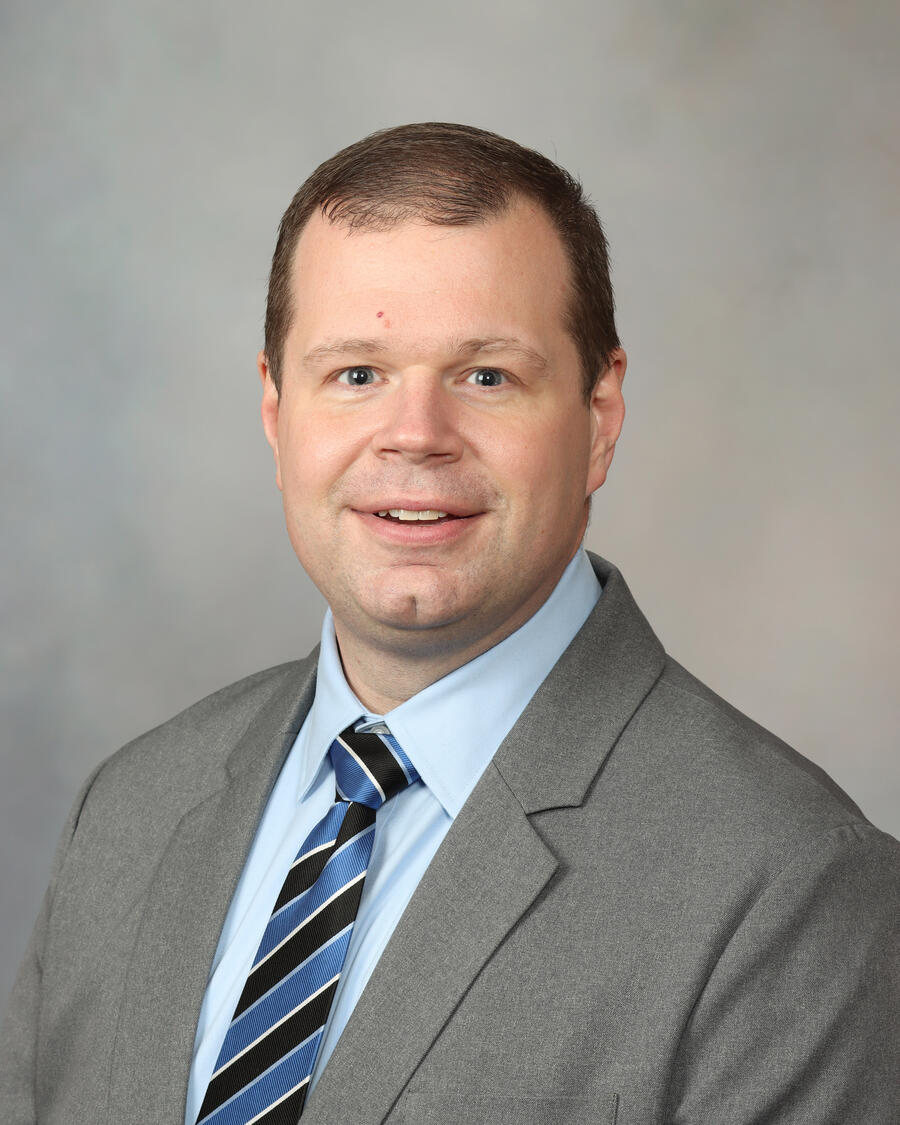He’s Moved From Taking Exams to Making Them
By Rodney Campbell, ABR Communications Manager
2024;17(2):5

As a physician who switched career paths, Derek Johnson, MD, has passed his share of Initial and Continuing Certification exams. He’s now lending his expertise to making ABR exams fair and relevant by serving as a volunteer.
Dr. Johnson started his medical career as a neuro-oncologist and was certified by the American Board of Psychiatry and Neurology in 2009. In that field, he spent a lot of time looking at MR scans with patients and their families to determine whether a tumor had grown.
“I became more interested in imaging, and particularly the scenarios where radiology didn’t seem to have the answer, like when the patient was declining but the imaging was stable, or the patient felt great, but the tumor had grown significantly,” he said.
He became so fascinated by imaging that he changed careers and completed a radiology residency, followed by neuroradiology and nuclear medicine fellowships at the Mayo Clinic in Minnesota.
“I decided that I wanted to spend the rest of my career focusing on these fascinating imaging questions,” said Dr. Johnson, who has been on staff at Mayo since 2012. “At the time, I was 100% sure I was going to practice in neuroradiology, and I really didn’t consider other subspecialties. However, I fell in love with nuclear medicine during my residency rotations.”
In 2021, Dr. Johnson became certified by the ABR in both diagnostic radiology and nuclear radiology. The following year, he added a certificate in neuroradiology. The second experience of pursuing Initial Certification inspired him to assist with exam development.
“After all those exams over the years, I was interested in the process,” he said. “Particularly taking the certifying exam and the subspecialty exams through the ABR. I was really impressed that they’re very relevant to practice.”
ABR Trustee Christopher P. Wood, MD, has known Dr. Johnson for more than 15 years. They met at Mayo Rochester when Dr. Johnson was a neuro-oncologist. As a neuroradiologist, Dr. Wood worked closely with his colleague and supported him to become an ABR volunteer in 2022.
“He is a consummate physician, dedicated educator, outstanding researcher, and excellent administrator,” Dr. Wood said. “Most importantly, his primary focus is on providing meticulous and compassionate care to our patients and supporting all of our physician, nursing, and allied health staff.”
As a volunteer, Dr. Johnson writes questions for two exams: IR/DR Certifying and Nuclear Radiology Subspecialty. Working with fellow subject matter experts on his committees gives him a perspective he didn’t have as a candidate.
“Collectively, there are decades and decades of experience in nuclear medicine and in exam writing,” he said. “We have many people who are not only active in clinical practice, but also in research or nuclear medicine … division and department heads and chairpersons. Everyone recognizes the value of what the ABR is doing in this process.”
As a volunteer, writing questions is never far from his mind. Even in the reading room, Dr. Johnson finds cases weekly that he believes are relevant for examinees.
“I’m a busy clinical nuclear medicine radiologist,” he said. “When an especially interesting case crosses my desk, I usually make a note and put it aside thinking this is going to end up as a test question someday.”
When writing questions, Dr. Johnson usually works backward, basing his queries on relevant cases with good imaging.
“Coming up with a question and then finding a picture that goes along with it that’s the same as the one you have in your head is difficult,” he said. “When you start with a really good clinical image, it’s much easier to then put a question to it.”
Dr. Johnson works with residents and fellows at Mayo, so he has a good idea of what they should know when taking an ABR exam. He and his colleagues work diligently to ensure that there’s nothing opaque about the correct answer when prepared examinees look at their options.
“In an ideal circumstance, we want the examinee to be able to read the question, look at the image, and know the answer,” he said. “The question should pass what we call the ‘cover test,’ where everything you need to know is in the stem and the images, and you’re only looking at the answer choices to confirm the one that ideally is already in your head.”
As is the case for many of the organization’s approximately 1,300 volunteers, Dr. Johnson finds meaning and purpose in his ABR volunteerism. He’s passed enough exams to appreciate the importance of board certification and its benefits to the public.
“I think there’s a sense of accomplishment in giving back to the field and making sure that we’re writing exams that are going to help the next generation of nuclear medicine trainees and nuclear medicine physicians,” he said. “We need to assess their knowledge to ensure that these are people who are able to safely take care of patients and help us push the field forward.”


